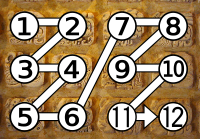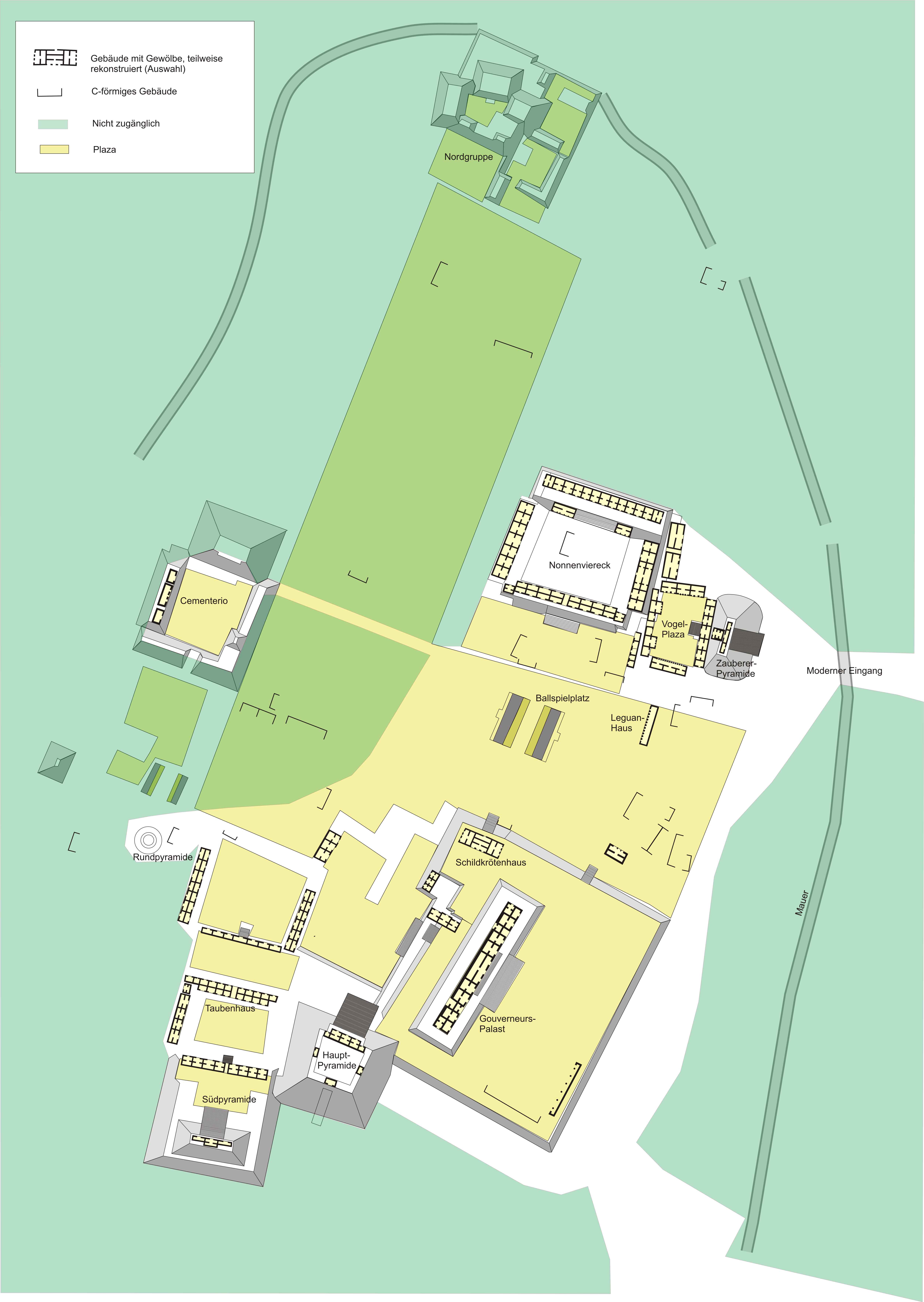|
Ah Xiu Xupan
Ah Xiu Xupan (Maya glyphs ) was the last known ruler of the Maya civilization, Mayan chiefdom of Tutul-Xiu when it was part of the League of Mayapan. In 1441, Ah Xiu Xupan, who was the great ruler of Uxmal at that time, was given the task of starting a war with the royal family of Cocom, which founded Tibolón. He managed to kill everyone except for one Cocom survivor. The war between Uxmal and Cocom plunged the league into chaos; there was segregation in the provinces and several uprisings broke out. By 1461, the league had completely disintegrated. After the war, Yucatan Peninsula, Yucatán was divided into sixteen kuchkabals.Chamberlain, Robert S. (1974) ''"Conquista y Colonización de Yucatán"'', Ed. Porrúa References [...More Info...] [...Related Items...] OR: [Wikipedia] [Google] [Baidu] |
Maya Glyphs
Maya script, also known as Maya glyphs, is historically the native writing system of the Maya civilization of Mesoamerica and is the only Mesoamerican writing system that has been substantially deciphered. The earliest inscriptions found which are identifiably Maya date to the 3rd century BCE in San Bartolo (Maya site), San Bartolo, Guatemala. Maya writing was in continuous use throughout Mesoamerica until the Spanish conquest of the Maya in the 16th and 17th centuries. Though modern Mayan languages are almost entirely written using the Latin alphabet rather than Maya script, there have been recent developments encouraging a revival of the Maya glyph system. Maya writing used logograms complemented with a set of syllabary, syllabic glyphs, somewhat similar in function to modern Japanese writing. Maya writing was called "hieroglyphics" or hieroglyphs by early European explorers of the 18th and 19th centuries who found its general appearance reminiscent of Egyptian hieroglyphs, al ... [...More Info...] [...Related Items...] OR: [Wikipedia] [Google] [Baidu] |
Maya Syllabary O 1
Maya may refer to: Ethnic groups * Maya peoples, of southern Mexico and northern Central America ** Maya civilization, the historical civilization of the Maya peoples ** Mayan languages, the languages of the Maya peoples * Maya (East Africa), a population native to the old Wej province in Ethiopia * Sibuyanon, a Visayan population sometimes "May-" native to Sibuyan Island in the Philippines Religion and mythology * Maya (religion), in Indian religions, relates to the illusion of reality *Maya (mother of the Buddha) (died 563 BC), mother of the historical Buddha *Mayasura or Maya, a Hindu demon * Maya religion, the religious practices of the Maya peoples of parts of Mexico and Central America ** Maya mythology, the myths and legends of the Maya civilization People * Maya (given name), a feminine name (including a list of people and fictional characters with the name) Places * Maya (Aldan), a river in Yakutia and the north of Khabarovsk Krai, Russia * Maya (Uda), a river in Amur O ... [...More Info...] [...Related Items...] OR: [Wikipedia] [Google] [Baidu] |
Maya Civilization
The Maya civilization () was a Mesoamerican civilization that existed from antiquity to the early modern period. It is known by its ancient temples and glyphs (script). The Maya script is the most sophisticated and highly developed writing system in the pre-Columbian Americas. The civilization is also noted for its art, architecture, mathematics, calendar, and astronomical system. The Maya civilization developed in the Maya Region, an area that today comprises southeastern Mexico, all of Guatemala and Belize, and the western portions of Honduras and El Salvador. It includes the northern lowlands of the Yucatán Peninsula and the Guatemalan Highlands of the Sierra Madre, the Mexican state of Chiapas, southern Guatemala, El Salvador, and the southern lowlands of the Pacific littoral plain. Today, their descendants, known collectively as the Maya, number well over 6 million individuals, speak more than twenty-eight surviving Mayan languages, and reside in nearly the s ... [...More Info...] [...Related Items...] OR: [Wikipedia] [Google] [Baidu] |
Tutul-Xiu
Tutul-Xiu (), also Tutul Xiues or Mani, was the name of a Mayan chiefdom of the central Yucatán Peninsula with capital in Maní, before the arrival of the Spanish conquistadors in the sixteenth century. Earlier history In later accounts the Cocom family are stated to have founded Mayapan in the Yucatán Peninsula. However earlier accounts state that the earliest rulers were the Xiu. They held dominance in the settlement for the first century of its existence (c. 1180–1280). This period is marked by an increasing number of stelae being dedicated to mark the end of k'atun periods, perhaps inspired by practices in the city of Uxmal. During this time Mayapan worked cooperatively with Uxmal and also Chichen Itza, which by this point had entered its decline. The Xiu gradually lost control of Mayapan, which was in the hands of the Cocom and their Canul mercenaries by 1300. In c. 1400 the Cocom expelled a large number of Xiu from the settlement. However the Xiu plotted reven ... [...More Info...] [...Related Items...] OR: [Wikipedia] [Google] [Baidu] |
League Of Mayapan
The League of Mayapan ( Yucatec: Luub Mayapan Maya glyphs: ) was a confederation of Maya states in the Postclassic period of Mesoamerica on the Yucatan Peninsula. The main members of the league were the Itza, the Tutul-Xiu, Mayapan, and Uxmal. Mayapan means flag of the Maya. Before the League The Itza The Itza were known as water witches. According to the Chilam Balam of Chumayel, in 325, they started immigrating to Bacalar from Peten. From there many of them continued northwest, where they conquered the classical Maya city of Uuc Yabnal and renamed it as Chichen Itza. They lived there from 550 to 692. After that, for economic and political reasons, the Itza moved to Chakan Putum, where they lived until 928, when they returned to Chichen Itza. The Tutul-Xiu The Tutul-Xiu were known as overflowing virtue. In the 7th century, they migrated to Yucatan. There their leader Ah Suytok Tutul Xiu, nicknamed Chac Uitzil Hun, founded Uxmal. The date that this happened is ... [...More Info...] [...Related Items...] OR: [Wikipedia] [Google] [Baidu] |
Uxmal
Uxmal (Yucatec Maya: ''Óoxmáal'' ) is an ancient Maya civilization, Maya city of the classical period located in present-day Mexico. It is considered one of the most important archaeological sites of Maya culture, along with Palenque, Chichen Itza and Calakmul in Mexico, Caracol and Xunantunich in Belize, and Tikal in Guatemala. It is located in the Puuc, Puuc region of the western Yucatán Peninsula, and is considered one of the Maya cities most representative of the region's dominant architectural style. It was designated a UNESCO World Heritage Site along with the nearby ruins of Kabah (Maya site), Kabah, Sayil and Labna. Uxmal is located 62 km south of Mérida, Yucatán, Mérida, capital of Yucatán state in Mexico. Its buildings are noted for their size and decoration. Ancient roads called ''sacbes'' connect the buildings, and also were built to other cities in the area such as Chichén Itzá in modern-day Mexico, Caracol and Xunantunich in modern-day Belize, and Tika ... [...More Info...] [...Related Items...] OR: [Wikipedia] [Google] [Baidu] |


